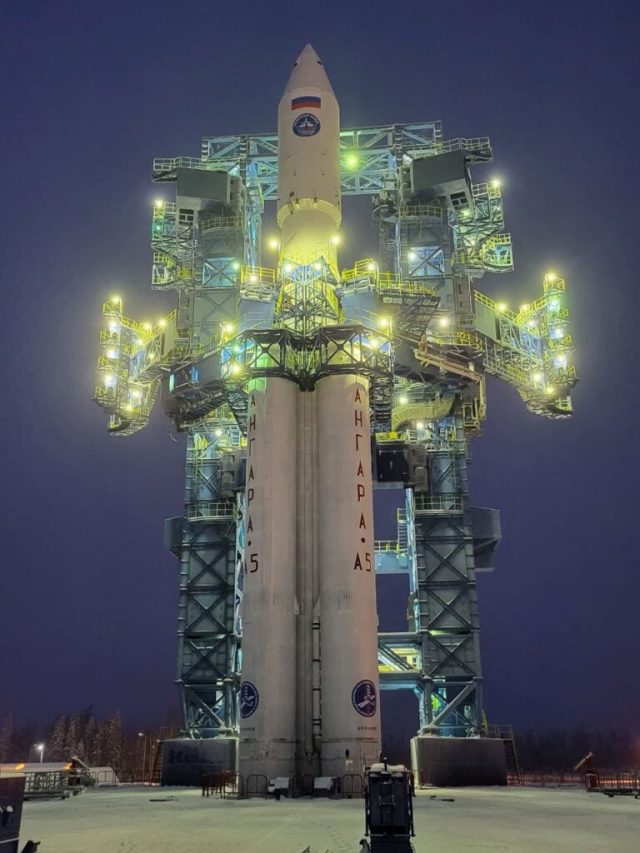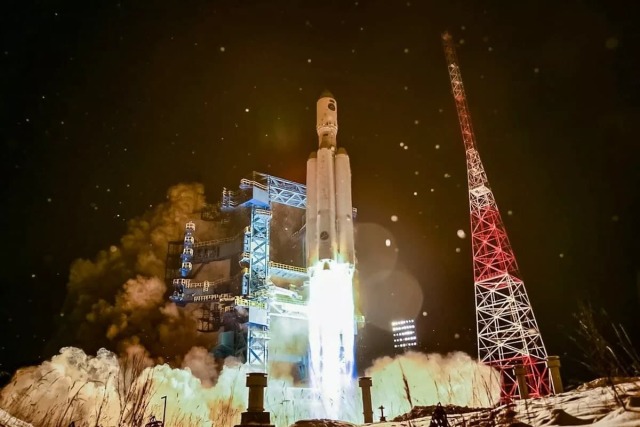It significantly increases the potential capabilities of the rocket in comparison with earlier Angara models. As in the last three test launches of missiles of this family, the payload was represented by a mock-up.
On December twenty-seventh, from the Plesetsk cosmodrome in the Arkhangelsk region, the military space forces launched the Angara-A5 with a new Perseus upper stage. The capacity of its tanks has been increased, therefore, although the potential capabilities of the rocket to launch the payload into low Earth orbit have not changed, to a geostationary orbit (36 thousand kilometers) it can output 3.6 tons, and not as previously 2.8 tons. This is quite a significant change, since large military satellites can have a lot of weight, including for geostationary orbits.
The launch took place normally, 12 minutes after the launch, the Perseus with the payload layout separated from the third stage of the Angara. All three stages fell in the designated areas, the head fairing of the carrier also separated in time. According to the flight program, nine hours after separation, the upper stage, after four cycles of turning on the engines, should enter the calculated geostationary orbit.
Angara-A5 is an oxygen-kerosene rocket weighing about 773 tons with a payload in low Earth orbit of 24.5 tons. So far, only three launches of missiles of this family have taken place: in 2014 (one launch of the light "Angara-1.2PP and "Angara-A5") and 2020 (one "Angara-A5"). The new launch was the fourth. To begin normal serial use of this rocket, it is considered necessary to conduct five test launches. Therefore, the completion of the tests is expected in 2022, and the start of mass production of the new product - from 2023.

Rocket on the launch pad in Plesetsk
Image source: Roscosmos
The advantage of "Angara" is that it does not use a rather poisonous heptyl, like cargo "Protons". People are not taken out on rockets with heptyl, so Protons could not be used for manned launches, and such launches are (for now) planned for Angara in the future. You can read about the disadvantages and other features of the "Angara" in modern conditions in the recent Naked Science material.
The cost of the rocket creation program is unclear today. In 2012, the head of the Federal Space Agency, Vladimir Popovkin, said that by that time 160 billion rubles had already been spent on the Angara (which had not yet flown) — about five billion dollars at the exchange rate of those years. A year later, Oleg Ostapenko — at that time the head of Roscosmos - named a figure of 100 billion rubles.
In 2018, the head of the scientific and technical council of the space department, Yuri Koptev, said that a total of 110 billion were allocated to the program. Apparently, either the now deceased Popovkin for some reason mercilessly overestimated the cost of creating Angara, or after him, representatives of Roscosmos no less decisively underestimated it. To reliably determine which of them is wrong, the state of the source database available today does not allow.


